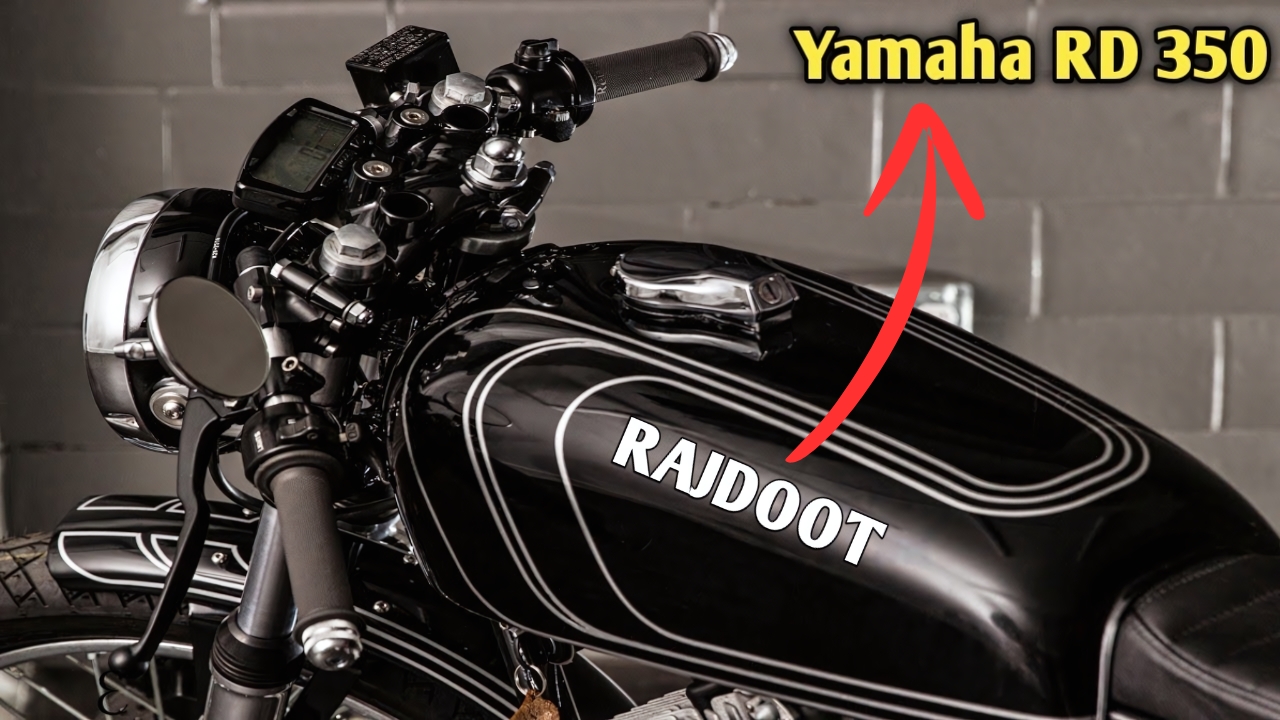In an unexpected twist that has sent ripples through the Indian motorcycle community, Escorts Group has announced the revival of the iconic Rajdoot 350.
This news has ignited a firestorm of nostalgia and excitement among bike enthusiasts who fondly remember the “Rajdoot” nameplate from its heyday in the 1960s and 70s.
A Blast from the Past
The Rajdoot 350, affectionately known as the “Punjabi tadka” during its prime, was more than just a motorcycle.
It was a cultural phenomenon that left an indelible mark on India’s automotive landscape.
Originally based on the Czechoslovakian Jawa 350, the Rajdoot quickly carved out its own identity, becoming synonymous with ruggedness and reliability.
“I still remember the day my father brought home our Rajdoot,” reminisces 62-year-old Gurpreet Singh from Ludhiana.
“The entire neighborhood gathered to admire it. It wasn’t just a bike; it was a status symbol.”
The Unexpected Comeback
The decision to resurrect the Rajdoot 350 comes as a surprise to many industry experts.
In an era dominated by high-tech, fuel-efficient machines, the return of this vintage icon seems almost anachronistic. However, Escorts Group sees it differently.
“We’re not just bringing back a motorcycle; we’re reviving a piece of Indian heritage,” says Nikhil Nanda, Chairman and Managing Director of Escorts Group.
“The new Rajdoot 350 will blend nostalgia with modern engineering, offering riders the best of both worlds.”
Marrying Nostalgia with Cutting-Edge Technology
The reborn Rajdoot 350 is a masterclass in retro-modern design.
At first glance, it retains the classic silhouette that made it famous – the distinctive teardrop fuel tank, the long, comfortable seat, and the robust frame.
However, a closer inspection reveals a host of modern touches.
The engine, while still a 350cc unit, now features fuel injection and liquid cooling, significantly boosting performance and efficiency.
The frame has been reinforced with high-strength steel, improving stability and safety. LED lighting, a digital-analog instrument cluster, and ABS are now standard features.
“It’s like meeting your childhood crush after decades, only to find they’ve aged like fine wine,” quips Rohit Sharma, a motorcycle journalist who had the opportunity to see the prototype.
“The essence is the same, but there’s a newfound sophistication that’s hard to ignore.”
Performance that Packs a Punch
True to its heritage, the new Rajdoot 350 doesn’t disappoint when it comes to performance.
The updated engine churns out a respectable 24 horsepower – a significant increase from its predecessor.
The bike weighs in at 172 kg, striking a balance between the heft needed for stability and the lightness required for agility.
“It’s still got that torquey feel that old-school riders will love,” notes Sharma.
“But now, it’s got the legs to keep up on the highway too. It’s a bike that bridges generations.”
A Cultural Icon Reborn
The Rajdoot’s return is more than just a new product launch; it’s the rebirth of a cultural icon.
Across North India, where the Rajdoot enjoyed immense popularity, the news has been met with unbridled enthusiasm.
Social media platforms are awash with nostalgic posts, with many sharing stories of their experiences with the original Rajdoot.
“My grandfather used to tell me stories about his Rajdoot adventures,” says Ankit Verma, a 25-year-old software engineer from Delhi.
“I never thought I’d get a chance to create my own Rajdoot memories. It’s like a piece of family history coming back to life.”
Challenges and Controversies
However, the Rajdoot’s comeback is not without its challenges.
Environmental activists have raised concerns about the reintroduction of a larger displacement engine in a market that’s increasingly focusing on smaller, more efficient motors.
“While we appreciate the cultural significance of the Rajdoot, we must also consider the environmental impact,” argues Greenpeace spokesperson Divya Sharma.
“We hope Escorts Group has taken adequate measures to ensure the new Rajdoot meets modern emission standards.”
Escorts Group has responded to these concerns by highlighting the advanced emission control technologies employed in the new Rajdoot 350 and its compliance with the latest BS6 norms.
Market Impact and Competition
The motorcycle industry is watching the Rajdoot’s relaunch with keen interest.
Many wonder if this move will spark a retro revolution, with other manufacturers potentially reviving their classic models.
“Escorts Group has always been a dark horse in the industry,” notes market analyst Vikram Chandra.
“If the new Rajdoot 350 proves successful, we might see a whole new segment of modernized classics emerging in the Indian market.”
Competitors are already rumored to be working on their responses to the Rajdoot.
Sources suggest that Mahindra is considering reviving the Yezdi brand, while TVS is reportedly exploring the possibility of bringing back the Fiero in a new avatar.
Looking Ahead
As the new Rajdoot 350 gears up for its official launch, it carries with it the weight of nostalgia, the excitement of innovation, and the hopes of a new generation of riders.
Whether it will recreate the magic of its predecessor remains to be seen, but one thing is certain – the legend of the Rajdoot lives on.
“The Rajdoot is more than just a motorcycle,” concludes Nanda. “It’s a testament to the enduring power of great design and the emotional connection people form with machines.
We’re not just selling a bike; we’re rekindling memories and creating new ones.”
As the distinctive thump of the new Rajdoot 350 echoes through the streets once again, it’s clear that this is more than just a product launch.
It’s the return of an icon, a bridge between generations, and a bold statement in an ever-evolving automotive landscape.
The Rajdoot 350, it seems, is ready to write its next chapter in Indian motorcycling history.
From the dusty lanes of Punjab to the bustling streets of metropolitan India, the Rajdoot 350 is poised to reclaim its place in the heart of the Indian rider.
As it faces off against modern competitors and changing consumer preferences, one thing is clear – the “Punjabi tadka” is back, and it’s spicier than ever.
